This post may contain affiliate links. If you make a purchase through a link, I may receive a small commission, at no cost to you. These commissions help keep this website up and running, and I thank you for your support. Read my full disclosure here.
This is not a sponsored post. All recommendations are my own.
I grew up in country New Zealand on a sheep farm, so I’ve always been a fan of all things wool. It’s long lasting, naturally antibacterial which neutralises odour, breathable, and it usually looks smart and resists fading better than other materials like cotton. However, there is nothing more frustrating when you find holes in your favourite wool garment and being completely baffled as to how it got there. There are a variety of potential reasons for this, so read over these points and discover what’s causing your holes and how to prevent it from happening.
Poor Quality Wool
Over the years I’ve bought lots of wool items and some have been made with really poor quality fibre which forms holes simply by looking at it wrong. One sweater I purchased formed holes within hours of putting it on. The shop assistant somehow convinced me to just exchange it for a new one instead of getting my money back…twice! I was young and a bit naive back then.
Most people don’t realise that there are different classes/quality of wool. This is due to a range of reasons including the breed of the sheep and what part of the sheep it comes from. Poor quality wool is usually used for carpets and insulation where the quality is not a concern, however, sometimes it is used in clothing by manufacturers wanting to produce a cheap product.
Unfortunately, even for someone like me who grew up with wool, it can be really hard to tell what is and isn’t good quality when you are shopping. So just make sure that you keep your receipts and return the item for a full refund (don’t bother exchanging it) if you get a poor quality garment.
Another reason for the holes can be due to the strength of the yarn. The finer the yarn, the more fragile and weaker it is. When shopping, if the wool garment is super fine and delicate, you should be cautious about purchasing it. If you do, then be very careful about washing and handling it. Make sure you don’t wear any jewellery that may catch on it and cause holes, and only hand wash it (unless the label advises dry cleaning of course).
Using the Wrong Detergent
Most people think that they can wash their wool garments with their usual washing detergent, and scoff that speciality wool wash is just another marketing ploy to get us to buy yet another product. Little do they know, their laundry detergent is causing the holes in their wool garments.
Most laundry detergents contain a variety of active enzymes. When a stain is combined with its matching enzyme, it acts as a key, unlocking and breaking it up. Enzymes are great because they are biodegradable, non-toxic to plants and animals. and reduce the need for surfactants which are harmful to the environment.
The enzyme Protease loves eating protein based stains and removes stains such as egg, blood, faecal matter, and sweat. However, materials made from animal derived products such as silk and wool are also made of proteins. Unfortunately, enzymes can’t differentiate between an egg stain and wool, so they eat away at it, breaking down the fibres and creating small, randomly placed holes. They don’t usually appear after the first wash (so if you’ve accidentally forgotten to separate those wool socks it should be OK), but, after several washes you will begin to notice them develop. Find out more about enzyme detergents.
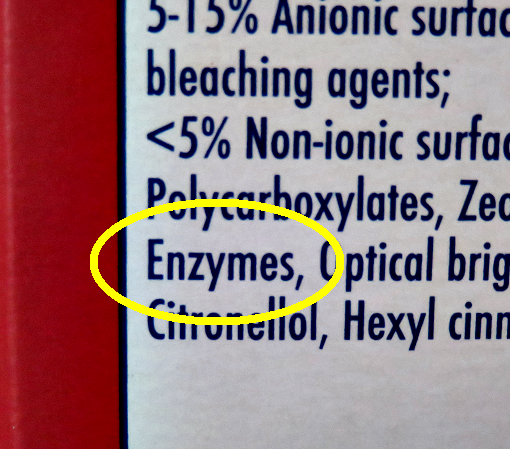
To wash wool garments you need a specialised wool detergent such as Nikwax wool wash. It has a neutral pH, is gentle on wool and is effective at washing in the lower temperatures required by wool. It’s also really good at cleaning performance wool (aka your sweaty, smelly sports clothes). This should be the only product you need to use to wash your wool. Don’t be tempted to add fabric softener, as it will absorb into the fibre and affect its ability to breathe and to wick the moisture away from your body. This is especially important for wool thermals and performance clothing. It can also make bobbling worse.
If you regularly use fabric softener, then you should be aware of the build up it causes on the inside of the washing machine and although you may not add any to the wool wash you are doing, residue will end up on your wool garment. Always make sure you are regularly cleaning your washing machine by following this guide on how to clean and sanitise your washing machine, and think about swapping your fabric softener for white vinegar.
Your Washing it Wrong
Firstly, always check the label on your garment before you wash it. If you get it wrong, the damage can be irreversible. Not only can you get holes, but you also risk it becoming felted aka completely ruining it. Some wool items can be machine washed on a wool cycle, some need to be hand washed only, and others can only be dry cleaned. The instructions need to be respected!
Machine Wash on Wool Cycle Label
If your wool garment label advises that you can machine wash it on the wool cycle, then check your machine to see if it has this setting available. Most modern machines do, but some basic machines, like at laundromats, don’t. The wool setting on the machine usually uses cool to lukewarm water of 30ºC (86°F) and gently agitates and spins garments.
Tips:
- Make sure there is nothing in the wash that could catch on the delicate wool fibres and cause holes. Common culprits are zippers, particularly open ones (close those zippers people!).
- As I’ve outlined above, you need to use a specialised wool wash such as Nikwax wool wash.
- Don’t overload the machine, it forces items between the door seal and drum or door glass. Even large items, if trapped, can be dragged around in that area and damaged, causing holes. This is why most doors are shaped with a dome, it pushes the clothing back into the safe zone. However, if your washing machine is packed too full, this won’t happen.
Hand Wash Only Label
If your garment has a hand wash only label, you need to be very careful with your hand washing technique, otherwise you could both stretch and cause holes in your garment.
Follow these instructions for hand washing wool:
- Use a specialised wool detergent
- Use cool, lukewarm water
- Mix the water and detergent together
- Gently place the item into the water and allow it to slowly immerse itself into the water, with only gentle prodding
- Handle the garment as little as possible so you don’t cause stretching
- Gently squeeze the item and swirl it in the water
- Keep wash time to a minimum, this will reduce colour run, maintain your garments colour, and reduce the risk of the wool felting
- Gently rinse the item using the techniques above, but with clean water
- Once you’ve finished rinsing the detergent out of your garment, gently squeeze the water out, being careful not to stretch the fabric.
- Lay the item out on a white towel (so that there is no colour transfer from the towel to the garment). Roll it up like a swiss roll and gently squeeze it out.
- Lay the garment out flat and gently arrange it into shape to dry. Don’t tumble dry it as it will cause shrinking.
Dry Clean Only Label
Some wool’s, like cashmere and new wool are so fragile that they can only be dry cleaned. This is obviously very expensive, so always check the label before purchasing your item, because you are committing to paying for dry cleaning for the life of the garment.
Bugs Bugs Bugs…
Sadly moths LOVE your wool’s. It’s actually the larvae that eats small holes in your wool, so you need to stop the adults from laying their eggs in your garments. Then there are silverfish that eat the surface of the wool leaving a shaved look and weakening the fabric that can then causes holes. Both silverfish and moths love dark, damp areas like your wardrobe and drawers.
How to Get Rid of Moths and Silverfish
Traditionally people used moth balls, but lets be honest, they are made of dangerous chemicals and stink. Nobody wants to wear garments that have such a strong odour. So what are the other options?
- Use cedar balls or lavender sachets to repel moths. They are safer and smell better than the traditional moth balls. However, they only repel moths. If they have already laid their larvae, it won’t kill any larvae that they have already laid. To kill the larvae, see details below. As the scent fades, so does its efficiency, so regularly replace them.
- Don’t leave dirty clothes and food lying around. Moths especially love dirty, sweaty clothes. Instead, carefully wash them and place them into moth resistant clothing bags. You can get bags for hanging items in your wardrobes, and storage bags that fit into your drawers and the bottom of your wardrobe.
- If the moths have already laid their larvae, you can kill them by placing your item in a hot wash, however, with wools this is not an option as it will cause shrinking and potentially damage the fiber. Instead, place your items in a bag and put them in the freezer for at least two hours.
- Regularly clean out your bedroom, cupboards and wardrobe by vacuuming and wiping surfaces clean.
It’s Getting Caught on Your Jewellery/Button/Belt Buckle
Notice holes forming at the bottom front of your wool tops? Rubbing against your trouser button and or belt buckle can weaken and damage fibres causing holes to appear. This issue is not so bad with chunky jumpers, but more so with fine knits, especially those that are fitted in style like thermals and t-shirts. You can mitigate this damage by tucking your top into your trousers, but this solutions might not be popular with those of you that like to wear your tops un-tucked!
In addition, jewellery such as rings and necklaces that have clasps can cause snags and break fibres and lead to holes forming. Be careful of what jewellery you wear when wearing your delicate wools.

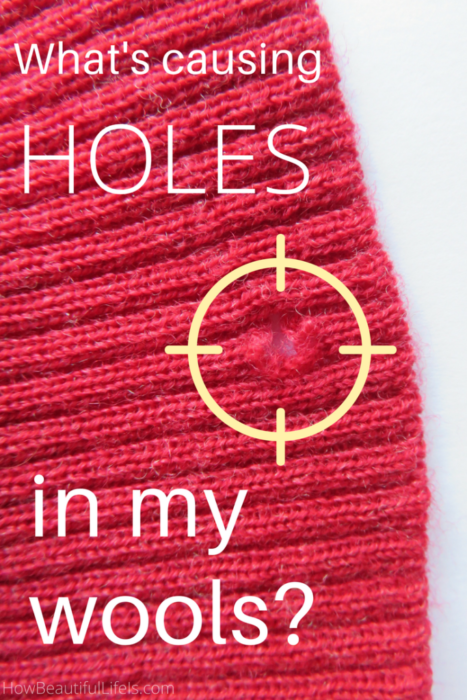

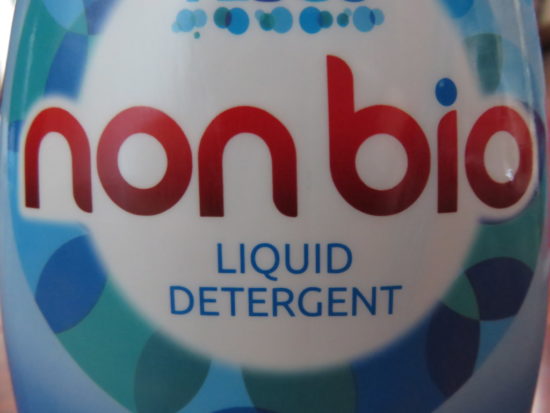
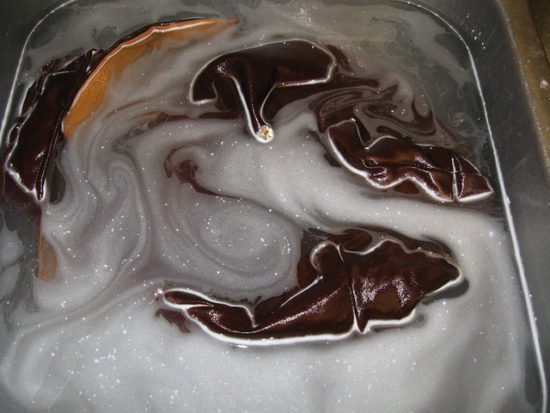
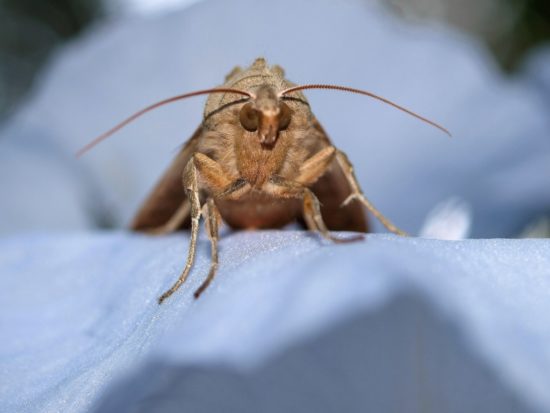
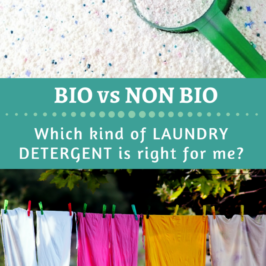
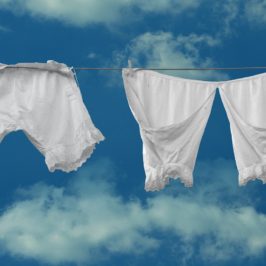
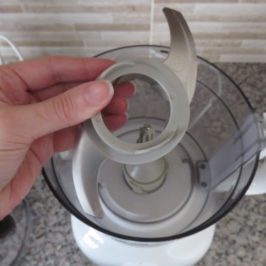

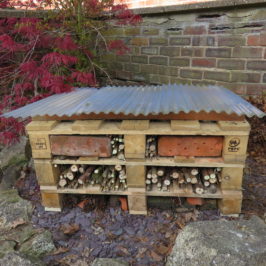
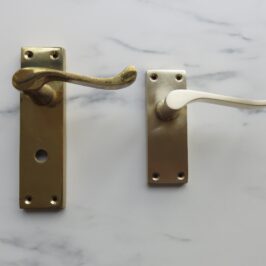
Leave a Reply